5 picturebooks to develop language for struggling readers and EAL learners
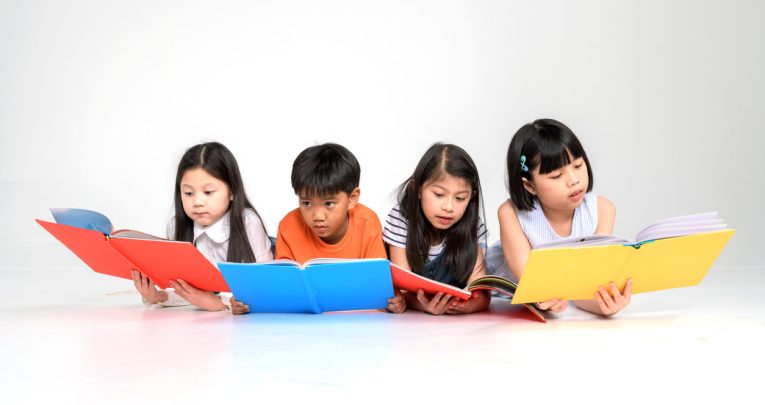
The simplicity of picture books can provide flexible opportunities for developing the language of EAL learners or English-speaking pupils in need of a boost, says Sam Pope…

- by Sam Pope

Picture books aren’t just pretty to look at; some of the best can be used in schemes of work for a wide variety of literacy-based activities – and offer plenty of cross-curricular opportunities, too.
The seemingly simple text can also be manipulated to create a wider word bank from which children can increase their vocabulary and descriptive skills.
I have chosen the following examples based on my experience of teaching Chinese primary school children on a one-to-one basis, but these could also be used with English-speaking pupils whose language needs a boost in both literacy and other subject areas.
1 | I Want My Hat Back and This is Not My Hat
Jon Klassen
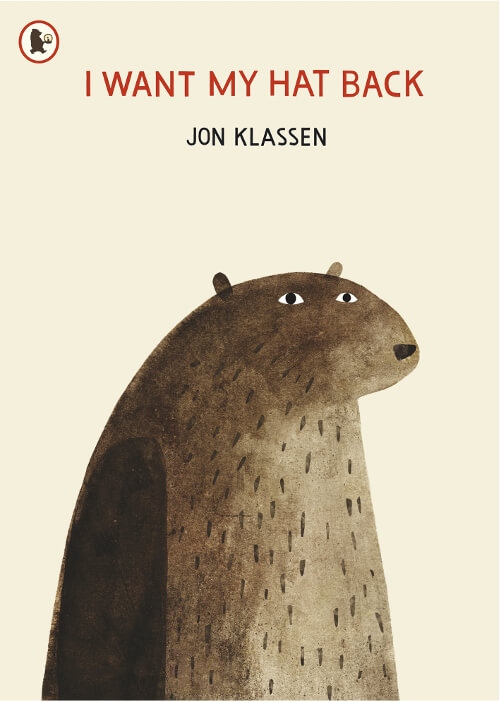 Good for: discussing inference, learning possessive pronouns
Good for: discussing inference, learning possessive pronouns
Cross-curricular: science (animals)
I often read these Jon Klassen favourites in the library as they are so amusing to listen to but they also work well in lessons about possessive pronouns and apostrophes, as well as inference and irony.
The first book is best for this, because you can discuss the use of my/mine, your/yours, his/her(s), and so on, and ask pupils questions based on the book, such as:
Where do you think the Bear lost his hat? Whose hat is Rabbit wearing? Is it his or her hat?
In both books, the reader is treated to hilarious dramatic irony as neither narrator is particularly clued-in as to what’s happening.
As with all excellent picture books, the illustrations tell a different story to the words and I ask students to talk about them even more than the words as we explore feelings and facial expressions.
An extension activity is to encourage pupils to draw and write their own short story based on the books, even if their language is at a basic level.
One pupil of mine managed to recreate a section of dialogue from the first book very impressively, and had me in stitches laughing. It may be mimicry but, as they say, imitation is the sincerest form of flattery.
2 | The Katie books
James Mayhew
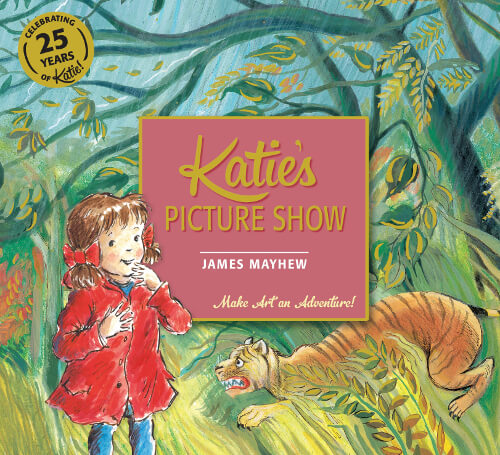 Good for: developing descriptive language
Good for: developing descriptive language
Cross-curricular: art, history
Earlier this year, I was taught an eager and creative boy whose passion in life was art, particularly the impressionists, so I turned to James Mayhew’s gorgeous Katie picture books for inspiration.
Mayhew brings the pictures and characters to life so that the children become involved in the adventure unfolding in front of them while learning a little about an artist’s work and the time in which he or she was creating.
My pupil drew amazing copies of Van Gogh’s paintings and then we used these as a basis to explore creative descriptions – we brainstormed different ways of expressing colours using a thesaurus and then he imagined he was stepping into Van Gogh’s The Starry Night, using sensory language to convey what he saw and felt, and touched and felt. We decided to base his account in the past, so this helped him practise his use of past-tense verbs, which was – as is often the case with even very talented Chinese children – a little shaky.
3 | Dave’s Cave and Dave’s Rock
Frann Preston-Gannon
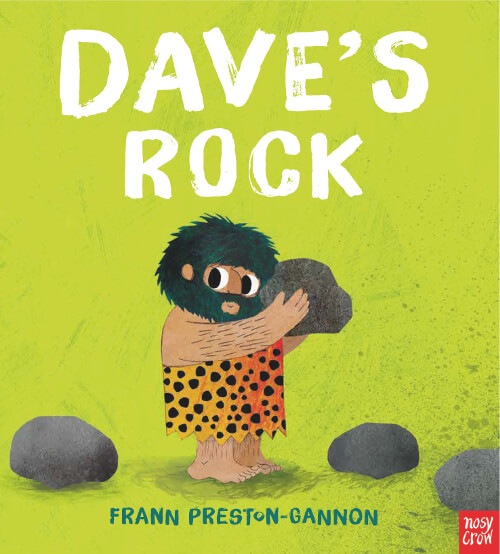 Good for: basic sentence structure (especially verbs and articles)
Good for: basic sentence structure (especially verbs and articles)
Cross-curricular: history, PSHE
Whenever I tell someone I am using these books to improve a child’s English, I am met with bemusement, as these two books are full of ‘caveman speak’, and therefore missing some articles and verbs. So, the books don’t model correct use of the English language but, for me, this is their strength!
Whenever I read the stories to my classes at school, the children always correct me as I read the text aloud – even if I patiently explain that the sentences are supposed to be flawed.
On the one hand, I get a little frustrated at having my storytelling interrupted and on the other, I’m impressed and happy they are such grammar pedants!
When I use this with my EAL students, I ensure they know these sentences are incorrect. They inevitably ask me why the author has done such a thing in a book and I have to explain that it’s for comedic effect.
Apparently, caveman speak isn’t a thing in China. Anyway, they are usually quick off the mark to explain what is missing and fill in the gaps relatively easily.
Even if they aren’t, you can use these books to model basic sentence structures and then involve your child in finding or thinking of verbs or articles that would fit well. I then challenge my students to come up with their own version of a Dave book. It’s fun and provides good learning or consolidation of basic grammatical structures.
4 | The Day the Crayons Quit
Drew Daywalt & Oliver Jeffers
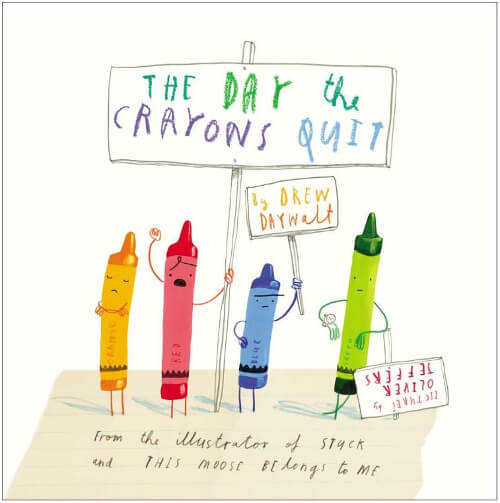 Good for: Learning colours, basic sentence structure (and writing)
Good for: Learning colours, basic sentence structure (and writing)
Cross-curricular: art, PSHE
This ever-popular book is an excellent way to get children enthused about learning about colours, emotions and how to write basic letters and postcards.
Each of the colours in the story has a gripe to take to Duncan, the boy who’s been using and abusing them. Either he has used them too much or too little, or they are sick of being used in a stereotypical way.
The writing is hilarious and it is easy to springboard a conversation about how they might be feeling from the letters. With my child, we discussed each colour and then talked about which colour he would most like to use, and which he liked least, before learning simple letter conventions (date, address form and sign-off).
As an extension activity you could give a child a thesaurus and ask them to look up different synonyms for the colours. In our packet of Crayolas, we had a ‘new’ colour (very exciting!) called ‘Bluetiful’.
5 | Handa’s Surprise
Eileen Brown
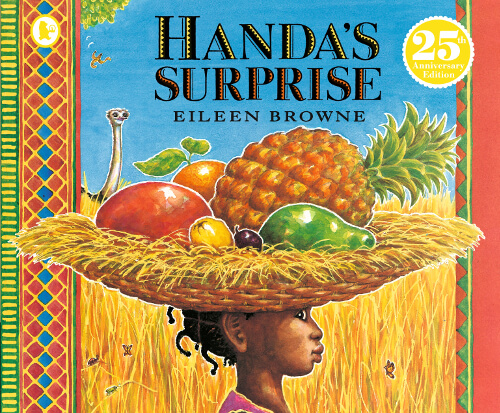 Good for: Learning basic fruit and animal words
Good for: Learning basic fruit and animal words
Cross-curricular: geography, PSHE, science
Handa’s Surprise is full of learning opportunities. With the text being simple, the illustrations do much of the storytelling and it allows children to react and give voice to their opinions and observations.
Each fruit matches an animal and children can consider other animals they might wish to pair up. You can use the story to talk about Kenya and what the weather is like, and how it is different to the UK.
You can ask children to look at Handa’s facial expressions and consider whether she really knows what is going on during her walk to Akeyo’s village. What fruit do the children like best?
Can they order them in terms of size and weight? What adjectives can they use to describe the fruit and the animals? I could go on…
Other ideas
- You Choose series, by Pippa Goodhart and Nick Sharratt – excellent for starting conversations and use of the conditional tense
- Poems, nursery rhymes and traditional tales – excellent for helping EAL pupils gain an understanding of the sounds and rhythm of English
- Dr Seuss books – as above, convey rhyme and humour with rhythm
Samantha Pope is librarian at St Michael’s CE Primary in Oxford. Find her at childtasticbooks.com and follow her on Twitter at @childtastic.










